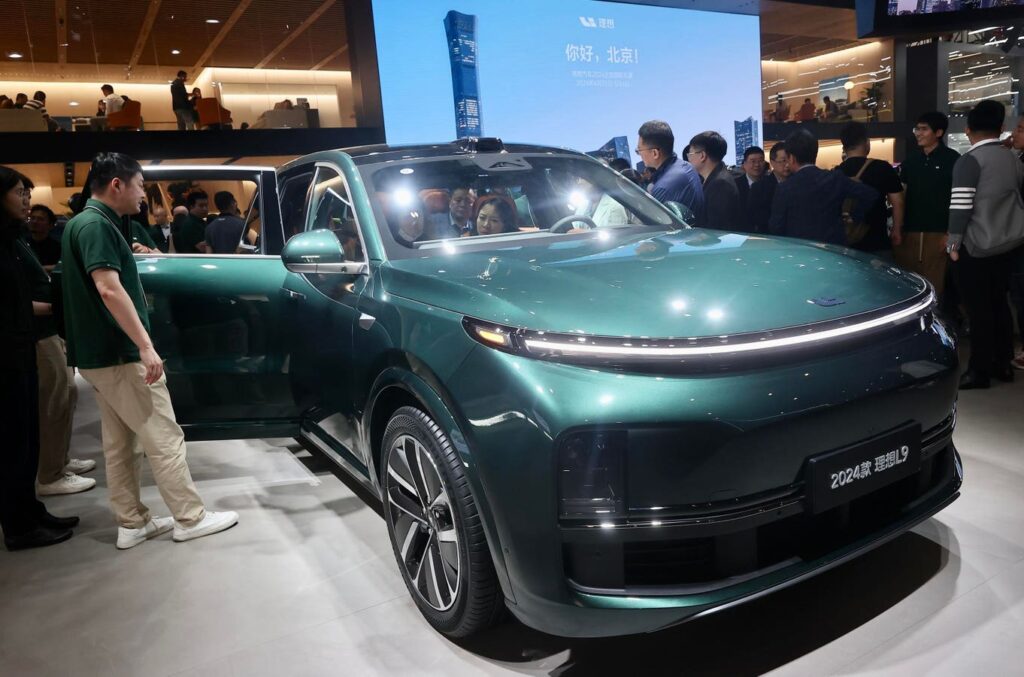Chinese luxury electric vehicle maker Li Auto stock saw growth slow over April, with deliveries coming in at 25,787 vehicles, up just 0.41% versus last year. The number was also down by about 11% compared to March. While Li Auto posted strong growth in recent quarters driven by a strong uptake of the company’s extended-range electric vehicle models including the Li L7, Li L8, and Li L9, the company is likely seeing demand cool off as the broader EV market slows and competition mounts. Moreover, Li’s first battery electric vehicle model, the Li Mega, which launched in early March, is also apparently seeing a tepid uptake. In mid-April, Li Auto lowered prices on most of its models by about RMB 20,000 ($2,760) following Tesla’s
Tesla
LI stock has seen a decline of 15% from levels of $30 in early January 2021 to around $25 now, vs. an increase of about 35% for the S&P 500 over this roughly 3-year period. However, the decrease in LI stock has been far from consistent. Returns for the stock were 11% in 2021, -36% in 2022, and 83% in 2023. In comparison, returns for the S&P 500 have been 27% in 2021, -19% in 2022, and 24% in 2023 – indicating that LI underperformed the S&P in 2021 and 2022. In fact, consistently beating the S&P 500 – in good times and bad – has been difficult over recent years for individual stocks; for heavyweights in the Consumer Discretionary sector including AMZN, TSLA, and TM, and even for the mega-cap stars GOOG, MSFT, and AAPL. In contrast, the Trefis High Quality Portfolio, with a collection of 30 stocks, has outperformed the S&P 500 each year over the same period. Why is that? As a group, HQ Portfolio stocks provided better returns with less risk versus the benchmark index; less of a roller-coaster ride as evident in HQ Portfolio performance metrics. Given the current uncertain macroeconomic environment with high oil prices and elevated interest rates, could LI face a similar situation as it did in 2021 and 2022 and underperform the S&P over the next 12 months – or will it see a recovery?
There are concerns about global EV demand, with most mainstream automakers seeing tepid demand and scaling back on their electrification goals. That said, there are multiple positives in the Chinese EV market. China recently announced new incentives of RMB 10,000 (about $1,410) for consumers to trade their older gasoline cars for electric and low-emission vehicles by year-end. Moreover, Li could also benefit as it ramps up production of its new low-priced model, the Li L6, which starts at RMB 249,800 ($34,490). Li is also expanding its retail footprint. The company has about 474 retail stores across 142 cities presently, and aims to nearly double this number to 800 stores by the end of the year. Now, Li stock trades at about $31 per share, about 15x consensus 2024 earnings and 12x 2025 earnings, which is not very expensive considering that the company’s revenues are projected to grow by over 45% this year and by over 40% next year. See our analysis of Nio, Xpeng & Li Auto: How Do Chinese EV Stocks Compare? for a detailed look at how Li stock compares with its rivals Nio and Xpeng.
Invest with Trefis Market Beating Portfolios
See all Trefis Price Estimates
Read the full article here
















